Coming to a stop on your motorcycle and being unable to select neutral is an annoying problem. It’s true that some bikes make it easier to find neutral than others, but you’ll still want to investigate a few causes.
Our short article highlights the most common problems that make finding neutral on your motorcycle difficult.
Your Clutch Needs Adjusting
The most common cause is a poorly adjusted clutch. This problem is more typical with cable-operated clutches, but hydraulic clutches can also suffer.
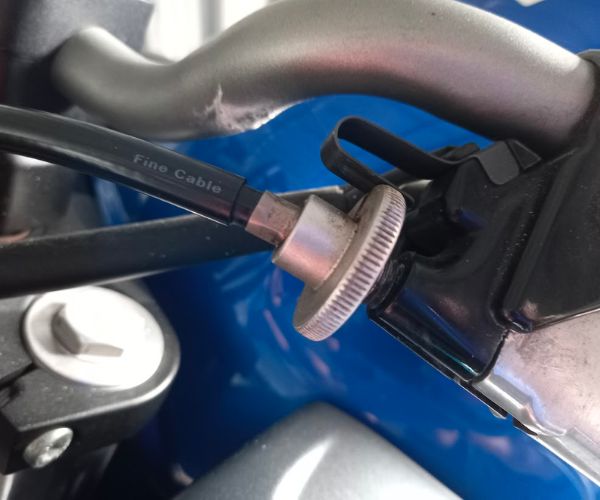
What we’re looking at here is a dragging clutch, where the clutch plates are not separating enough to allow the engine to spin freely. Because the clutch is not slipping correctly, the engine is still applying power to the gearbox, and this pressure on the gears causes the problem.
Cable Clutch
You can usually adjust a cable-operated clutch at the handlebar lever and the operating lever at the clutch end of the cable.
The operating lever must be adjusted first, following the manufacturer’s procedure. Different bikes will have different setups, but essentially, you’re setting the free play at the operating lever.
On my Yamaha Fazer, there is a small screw and locknut system, which is very common. You adjust the Fazer’s clutch free play following the process below:
- Turn the handlebar adjuster fully in, giving maximum play at the lever.
- Loosen the locknut on the operating lever adjustment.
- Adjust the small screw until it just makes contact with the clutch operating rod.
- Undo the small screw a quarter turn to give a small amount of free play.
- Tighten the locking nut.
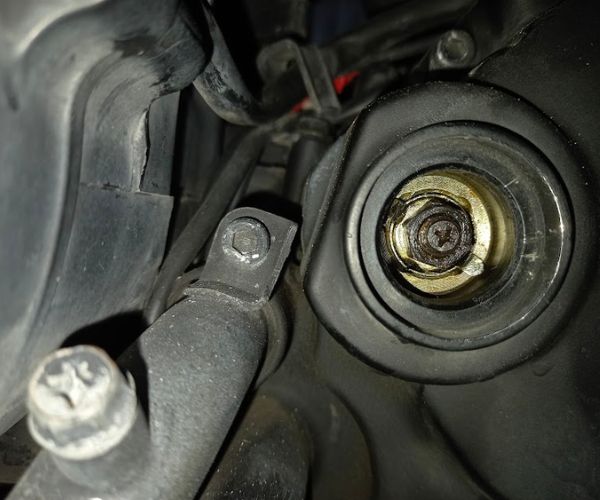
The free play at the operating lever end is essential to allow the clutch to engage when you release the handlebar lever.
Once you have set the operating lever free play, you can adjust the handlebar lever to get the correct position for the lever and the feel you want. The adjustment here is usually via a screw and thumbwheel setup. Ensure there is 10–15 mm free play at the handlebar. If you don’t, the clutch may not engage properly, and you will get clutch slip.
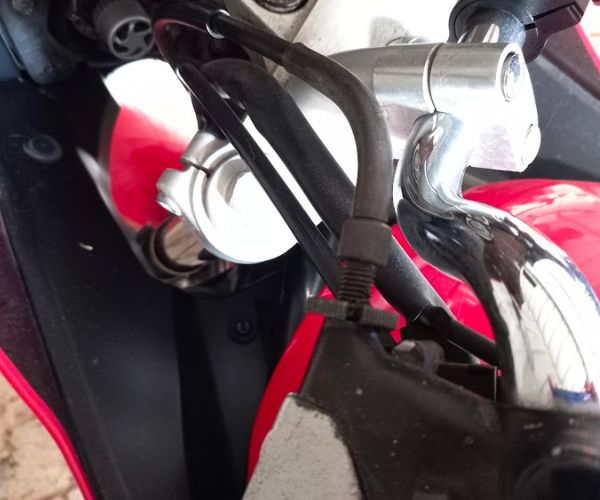
Hydraulic Clutch
Hydraulic clutches use a system similar to your bike’s brakes. You use the handlebar lever to compress the hydraulic fluid, and this pressure operates the clutch.
There is only one adjustment for a hydraulic clutch, at the handlebar lever, where you can adjust the free play. Ensure you have around 10–15 mm free play at the end of the lever.
The Engine Is Overdue for an Oil Change
If your bike is overdue for an engine oil change, this could also make finding neutral difficult. As you use your motorcycle, the engine oil absorbs many contaminants, including dust, burnt engine oil, and other debris.
The engine oil filter takes care of most contaminants, but over time your bike’s oil gets thicker and less efficient. If you’ve ever changed your oil, I’m sure you’ve noticed that the thick black liquid that comes out at oil change time is nothing like the oil that went in.
Fresh oil is good for your bike, so if you’re having trouble finding neutral and you’ve tried other solutions, try changing the oil and filter.
Read about how to change your oil and filter.
Your Chain Tension Is Too Tight or Too Loose
Correct drive chain tension is essential for the smooth operation of your motorcycle, particularly the gearbox and clutch.
A chain that is too tight will cause several problems, but the most obvious is difficulty in changing gears and finding neutral. Adjust your chain and check the smooth operation of the gears. Also make sure the chain is clean and correctly lubricated.
If your drive chain is too loose, this can also affect the smooth operation of the gear change, but more serious is the potential for the chain to come off the sprockets.
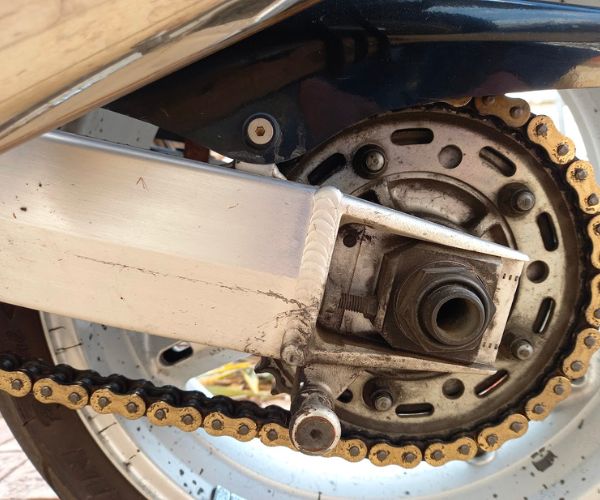
Your Engine Oil Is Low
Your bike’s engine oil lubricates both the clutch, in wet clutch systems, and the gearbox, making their operation smooth and easy.
If the bike’s engine oil level is too low, insufficient oil will be applied to the clutch plates and gears. A low oil level makes gearbox and clutch operation more difficult and increases the wear in your engine.
Check the engine oil level regularly and before every ride, if you can, to ensure it is sufficient.
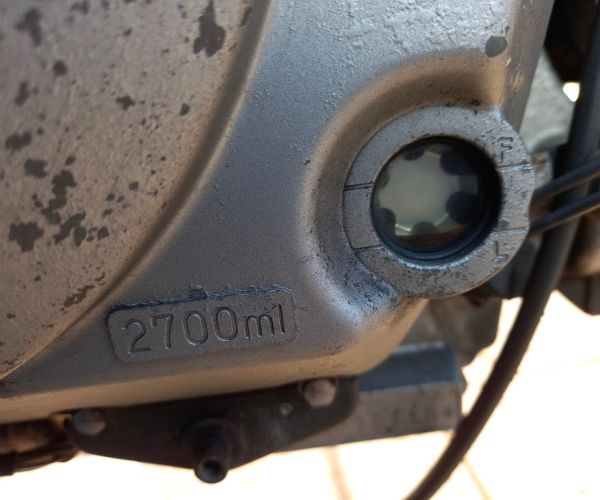
Your Clutch Is Faulty
Clutches are relatively simple devices. Strong springs force a set of rotating plates together, and when you operate the clutch, the springs expand to allow the clutch plates to slip.
Worn-Out Clutch Plates
There are two types of clutch plates: friction plates and steel plates. Over time, as you ride, the friction plates wear away. Eventually, the clutch will slip, and you must change the plates.
Worn-out clutch plates are unlikely to make selecting neutral difficult, but a fault with the clutch operation might.
Stiff Clutch Cable
A clutch cable that isn’t working smoothly could easily cause issues when putting the bike into neutral. It’s a relatively easy fix; you can disconnect the cable from the handlebars and clutch operating lever with only a few tools.
Don’t be tempted to spray lubricants such as WD40 down a clutch cable. Although WD40 and similar sprays are great for some applications, it often washes out any grease inside the cable and reacts with its inner sleeve, making the cable stick even more!
Hydraulic Clutch Failing
I had a faulty hydraulic clutch on my Suzuki SV1000S. The master cylinder seal failed, causing the clutch not to engage fully. Eventually, there was not enough movement when I pulled the lever, and I couldn’t change gears.
Hydraulic clutch systems have a master and slave cylinder, and both have rubber seals that could fail. Another possible problem is low fluid level or old fluid that has absorbed water.
If you suspect the hydraulic clutch, check the master and slave cylinders and flush the system with new brake fluid.
Your Shift Lever Is Tight or Loose
If your gear shift lever is tight or loose, it can cause difficult gear changes. Check the linkages and lubricate where required. Make sure the mounting bolts are correctly tightened. Bear in mind that some bolts may have locking nuts, and there may need to be some play for correct operation.
If in doubt, check the manufacturer’s maintenance manual.
Your Motorcycle Has Crash Damage
Crashing a motorcycle can cause all manner of damage, some unseen and hard to detect. Obvious damage, such as to the gear change linkage and clutch lever, is easily spotted. However, a hard enough impact can cause internal damage, which is more difficult to trace.
If you have tried all the above fixes to cure problems with shifting into neutral, you may have to look deeper into the engine’s internals.